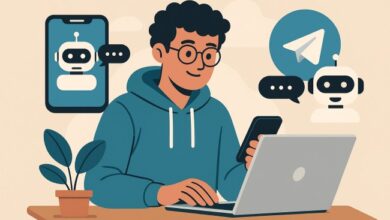The Rise of Content Creation Tech: Empowering AI Development
As the AI revolution continues to pick up steam, virtually every industry, including casual people and entrepreneurs, continues to tap into the power of AI development. While there are many controversial points to consider with AI, there’s no denying the immense power and ease that AI development brings to the table. None so much is more important than content creation. From bloggers to major Hollywood studios, this article pinpoints the rise of content creation in the tech and other spheres.
What Is AI Content Creation?
Depending on the usage, AI content creation can be a 100% replacement for human writers, coders, or artists. In many cases, AI tools work to assist human content creators. In recent years, AI content creation has thrived mainly because of tools like machine learning and behavioral AI. These tools work to study and mimic behavior to further simplify the work and creation process. More efficient content creation can save time and money and allow the development process to be finished much faster.
Importance of Content Creation in Tech
Because AI is an evolving technology, it remains important that ingenuity and AI tools continue to evolve to meet the growing demand. Also, because customization is at an all-time high, it becomes extremely important that this technology remains current to meet contemporary tech demands. This is especially true for hardcore tech fields like data programmers, program and HTML code developers, and more.
Types of Tech Content Creation
Every day presents new challenges and opportunities to fine-tune tech content creation in these most useful ways:
1. Content Creation for AI Training
It’s no surprise that the train for technology content creation keeps picking up steam by innovating and creating new AI models. The most recent and biggest improvement has been less data entry or data sets. Not only does this save time, but it continues to build company morale.
Another rising trend is synthetic content generation. With the abundance of AI tools to create text, video, and more, these artificial tools are now sophisticated enough to train and develop highly advanced AI models. It also continues to boost content and data augmentation.
2. Professional AI-Powered Content Creation
Even outside the tech sphere, like Meta, which continues investing highly in AI-driven content, the entertainment industry, and graphic designers, for example, continue to reap the benefits. With a series of prompts, human content creators can witness their visions and goals begin to take form and shape at lightning speed.
For example, regarding text generation, bloggers, novelists, and more can break through writer’s block with AI tools like Chat GPT-3. In the case of Hollywood, screenplay writers and moviemakers can get a functional treatment or even a realistic script in record time, thanks to AI content creation.
For graphic designers, the latest tech content creation opens the door to creating vividly real graphics, images, and videos from prompts. With advanced controls, these prompts can even tweak the content to meet specific demographics and marketing campaigns.
For those into voice work or musicians, AI tools can also blaze the winning path for creating complete soundtracks to accompany videos, documentaries, and games. The AI voice generators continue to improve to the point of not being able to separate real from deepfakes.
3. More Personalized Experiences
The entire business, e-commerce, and entertainment fields are all tasked with making their content much more personalized to keep their members coming back. On the strength of behavioral AI tools, top streaming services like Netflix can make winning suggestions for your previous movie and television watching.
For online gaming and the latest social casino apps, AI allows players to customize the game backgrounds to meet their needs. By being able to create custom characters that can easily be integrated into the game or a custom live dealer experience, these members spend more and often refer more members to the gaming experience.
Challenges in Tech Content Creation
While there are many benefits that tech content creation with AI brings to the table, there are some things that need to be worked out.
1. Staying Up to Date
Tech and AI continue to advance so fast that new technology today can be obsolete tomorrow. Some work is involved to ensure that you’re on the cutting edge and remaining in compliance.
2. More Simplicity
Not everyone is a computer programmer, so it remains highly important that these updated AI-driven tech content creation tools continue to simplify. If the common person can easily use AI, it’s better for all.
3. SEO Issues
With so much similar content, which is an issue in itself, getting the SEO right to make an AI-driven tech site or service stand out is always first on the agenda. As AI tools improve, so does creating the proper on-page and off-page SEO.
The Future Content Creation Tech
The future of tech content creation continues to rise. As mainstream and free tools like Chat GPT-3 continue to evolve, more people, especially those without a tech background, have the confidence to interact with this technology. AI tools continue to refine and use augmented and virtual reality technologies.
Emerging Trends
- Enhanced Live Streaming: The goal of AI content creation is to create more engagement in the live streaming process. With augmented reality, viewers can interact with the feeds and create new content on the fly.
- Blockchain Involvement: With AI more heavily involved in the finance industry, it continues to merge with blockchain technologies to help people cement ownership of their financial, real estate, and creative assets.
Conclusion
Tech content creation with AI continues to expand at amazing speed. The latest trend is to create a hybrid solution where AI tools work with human content creators. That way, they can help avoid copyright and plagiarism issues, which can be costly. Also, human professionals can get more satisfaction and enhance their creative vision without fear of being replaced.



